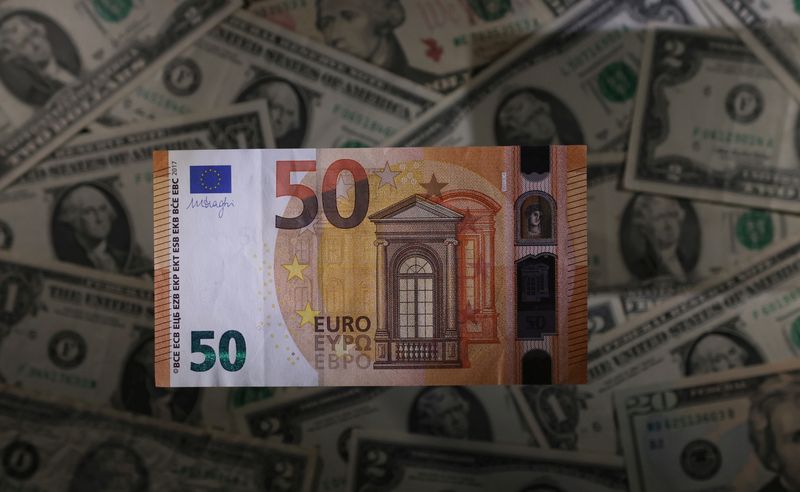Antipodeans hold onto recent gains as global markets await U.S.
[ad_1]

© Reuters. FILE PHOTO: A Euro banknote is seen placed on U.S. Dollar banknotes in this illustration taken, November 28, 2021. REUTERS/Dado Ruvic/Illustration
By Alun John
HONG KONG (Reuters) – The and dollars held recent gains to hover near multi-week highs on Thursday in line with investors’ recent turn towards riskier assets like equities, but currencies were little changed ahead of U.S. inflation data later in the day.
That data could provide new clues for traders about the pace of the Federal Reserve’s monetary tightening, with hotter-than expected consumer price readings potentially signalling the need for more aggressive interest rate hikes.
The Australian dollar was last at $0.7174, not far from the $0.7194 touched the day before, which was near a three-week high.
Analysts at Westpac in a morning note to clients pointed to the “explosion higher in metals markets, lift in global risk sentiment and a softish U.S. dollar” as factors supporting the Aussie, adding “a close above $0.7183 would suggest a further extension towards $0.7225 and possibly $0.7275.”
MSCI’s World Index is up about 2% this week after a bruising January, helped by a string of upbeat earnings and a few positive headlines suggesting tensions between the West and Russia over Ukraine may be easing. [MKTS/GLOB]
Aluminium prices rose to 13-1/2 year highs on Wednesday and other industrial metals also gained. [MET/L]
The New Zealand dollar, which reached a two-week high of $0.66975 on Wednesday, was at $0.6682.
The improved risk sentiment also weighed a little on the safe haven yen, which was at 115.61 per dollar, testing the weak end of its recent range.
The was holding steady at 95.561, having moved little this week, after a volatile two weeks.
“CPI for January is the only event that may push the (dollar) outside of its tight trading range this week,” said CBA analysts in a note.
Economists polled by Reuters expect a 0.5% month-over-month increase in January, and 7.3% year-on-year. With the Federal Reserve already jittery about high inflation, investors wonder whether a higher CPI print could push it to move faster and harder with policy tightening.
Markets are widely expecting a 25 basis point (bps) interest rate increase by the Fed at its March meeting, with some talking up the possibility of a 50 bps jump.
Cleveland Federal Reserve President Loretta Mester said on Wednesday she did not see a compelling case to start with a 50 bps increase, adding rate increases after March would depend on the strength of inflation and how much it moderates or persists.
U.S and European government bond yields have been rising as expectations of rate increases grow, but were quieter on Wednesday and Thursday morning.
Yields on U.S. benchmark 10-year notes were were last 1.9285%, a little off Tuesday’s 1.970%, a 27-month high.
The euro was at 1.1423, having edged lower this week after ECB President Christine Lagarde said on Monday there was no need for extensive…
[ad_2]
Read More: Antipodeans hold onto recent gains as global markets await U.S.
